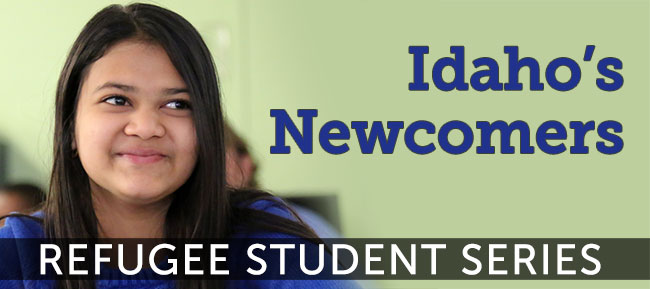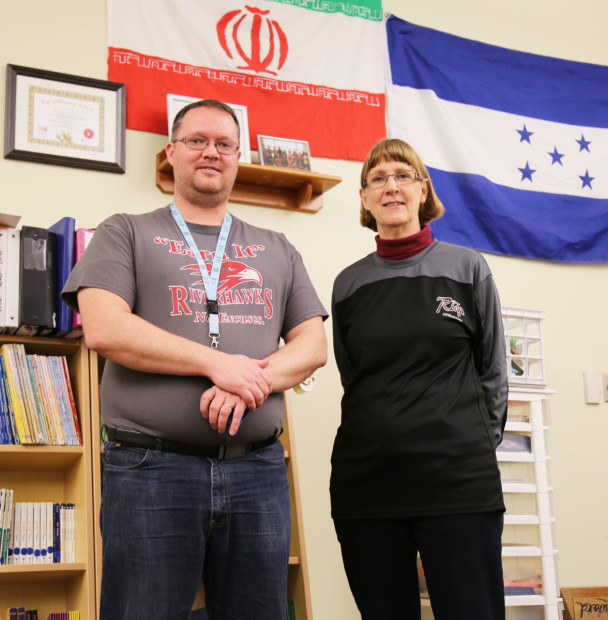Twin Falls’ refugee program brings together students from diverse backgrounds. It does the same with teachers.
 The district’s co-teaching model groups “the content police and the language police,” said Kimberly Allen, an instructional coach at Twin Falls’ Canyon Ridge High School. A subject expert — such as a math teacher — works alongside a colleague who specializes in working with English language learners.
The district’s co-teaching model groups “the content police and the language police,” said Kimberly Allen, an instructional coach at Twin Falls’ Canyon Ridge High School. A subject expert — such as a math teacher — works alongside a colleague who specializes in working with English language learners.
“We’ve jokingly called them arranged marriages,” said Allen.
In a district where students speak 27 languages, these marriages are a matter of necessity. The goal is to help subject teachers tailor lesson plans to the ELL students in their classes, and to deploy a team of teachers that will meet the needs of the entire class.
Like Twin Falls’ refugee program itself, the co-teaching approach has grown. Over six years, the district has pieced together $500,000 in grants — mostly from the State Department of Education, but also from community groups, private donors and the Twin Falls Education Foundation.
Eight ELL teachers and 16 other teachers have received training.
At Canyon Ridge, Kathy Dabestani and Brent Rogers team up to teach algebra I. Rogers is the ELL specialist with 14 years of experience, mostly working with Latino students. Dabestani, a math teacher, has a unique perspective on the plight of the refugee students. Her husband is Iranian, and in the late 1970s, the couple fled the Iranian revolution that thrust the Ayatollah Khomeini into power.

Rogers and Dabestani bring their respective language skills to the process. Rogers speaks Spanish, Dabestani speaks Farsi. But in a class with students from Nepal, Iraq, Afghanistan, Congo and the Sudan, the teachers have to figure out ways to make math translate.
Dabestani designs the lesson plans. Rogers focuses on making the plans work in a multilingual class, keying in on the English words and terms students will need to know in order to master the math. Then Dabestani and Rogers teach the class together.
Through constant repetition and practice, the ELL students pick up the terminology of math. Once that happens, says Dabestani, the math comes easier.
The collaborative model also breaks down barriers between faculty members. ELL teachers tend to become protective of their students, said Khrista Buschhorn, an ELL instructional coach. But when teachers work together — and, together, learn about the challenges facing refugees — the newcomer students become everyone’s students.
And like all students, the newcomers like to interact. Not that this is necessarily a problem. “They’re speaking in English, so that’s a good behavior,” Dabestani said.
This series at a glance
Day One: Refugee programs become embroiled in a national debate
Day One: In Boise’s Bridge Programs, immigrants learn to be students
Day Two: Twin Falls reaffirms support for refugee program
Day Two: Refugee education hinges on a co-teaching model
